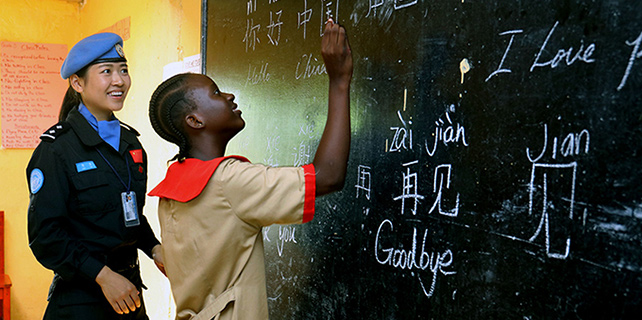Chinese, European astronauts to train jointly to survive sea landings
Two European and two Chinese astronauts will undertake an extreme sea survival training exercise off the coast of Shandong province in the first such maneuver to occur in Chinese waters.
Chinese astronauts Ye Guangfu and Chen Dong will join Samantha Cristoforetti of Italy and Germany's Matthias Maurer for a 10-day joint training program in Yantai, on the Bohai Strait, in late August. During the exercise, they will be left at sea with limited supplies and equipment.
European Space Agency spokesman Pal Hvistendahl said the drill is part of a larger agreement between the ESA and the China Manned Space Agency to collaborate on astronaut training, scientific utilization and infrastructure.
"This group is advancing rapidly with exchanges of practices and training activities, notably survival training," Hvistendahl said. "The objective of the cooperation with CMSA is to fly a European astronaut on the Chinese Space Station in 2022."
The exercise is designed to prepare the astronauts in the event of an emergency landing in an extreme environment. Upon re-entry, spacecraft may be forced to come down in the sea, desert, tropical rain forest or on a glacier, in summer or winter. The astronauts must learn to survive for long periods on basic items provided in a capsule's emergency pack.
The four astronauts have previously trained together at the European Astronaut Center in Cologne, Germany, and have taken to the sky in zero-gravity parabolic flight maneuvers. Ye Guangfu has completed the ESA's two-week underground training program in Sardinia, Italy. Both Maurer and Cristoforetti have visited China before and speak Mandarin.
Maurer told the German magazine Der Spiegel: "They are great, very pleasant colleagues to work with. I would be really happy to fly with my Chinese colleagues to the station. ... This sea survival training is now a further step toward future cooperation between Europe and China in the area of space travel."
The European and Chinese space agencies have significantly strengthened ties in recent months. This year, Tian Yulong, secretary-general of the China National Space Administration, told Chinese media he had discussed several joint proposals with the ESA including launch projects and a base on the moon.
Through its space program, China lifted the Tiangong-1 and Tiangong-2 space labs into orbit in 2011 and 2016, respectively. This allowed testing of the technology required to build a permanent, staffed space station.
angus@mail.chinadailyuk.com









